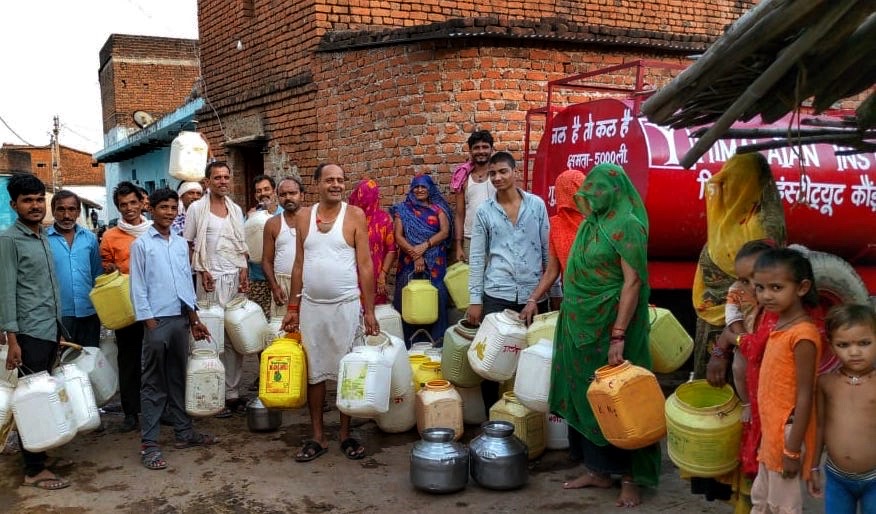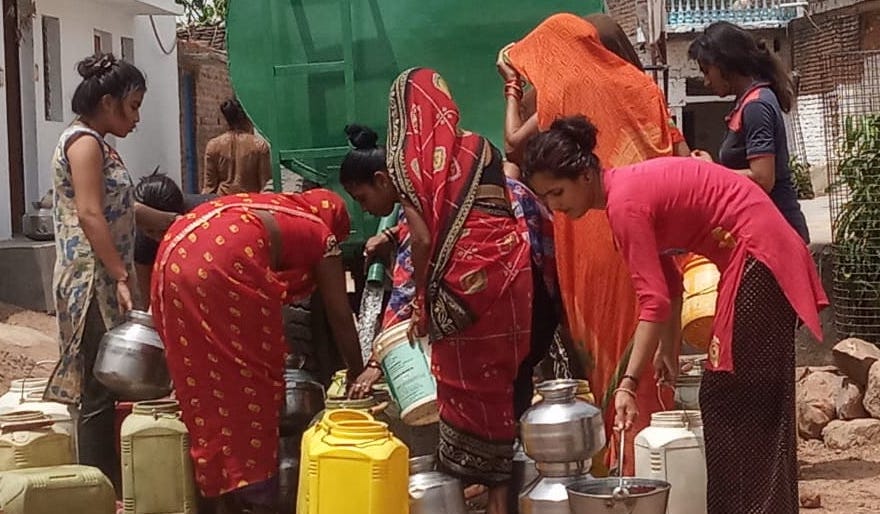The Importance of Pilgrimage
The beginning of 2017 brought people from across the United States to ancient temples, shrines, and villages rooted in the Himalayan tradition. The most recent excursion to Tungnath—the highest Shiva temple in the world—gave participants the opportunity to connect with the places and practices they had learned about in their studies and in Himalayan Institute books.
Pilgrimage can mean different things to each participant in the excursion. It may be an opportunity to deepen their practice or they may feel inspired to start a whole new practice. Or, it can mean opening themselves up to a whole new understanding of what it means to practice and study the teachings of the Himalayan masters.
Overwhelmingly, the situation illuminates how people come to new experiences with different intentions and desires—seeking something that is truly personal, something they may still be uncovering within themselves. Expectations of pilgrimage will vary—some may be going with a completely open mind looking for “something”, others may be going with a specific purpose, hoping to achieve a personal goal. But, as Excursions Director Alat Tigunait says, “you might not get what you think you wanted, but you’ll get what you needed out of the experience”. Anyone who has previously committed themselves to a new practice or personal challenge will know this to be true.
The Trek
The journey started in Dehradun—the entry point for most trips into the Himalayan mountain range, from which the group hiked to Sursingdhar eco-village at an elevation of 6,000 ft. For many of the participants, this initial leg of the trek—travelling to such incredible vistas—really set the tone for the rest of the excursion. It has been said that, “Everybody needs beauty as well as bread, places to play in and pray in, where nature may heal and give strength to body and soul” (John Muir) and the reaction from the group to such awe-inspiring scenes of natural wonder certainly roused similar sentiments.



From Sursingdhar the trek continued up to an elevation of 10,000 ft to the famous Shakti shrine Surkanda Devi, and then onto the Ukhimath temple, which is the winter seat of Kedarnath.


What is beautiful about the Himalayan custom of taking care of ancestral temples, shrines, and artifacts, is that there is real care taken to maintain not only the physical structures within the Himalayan Mountains, but their sanctity as well.
This was a special moment for many people on the excursion—so much more was seen and experienced than people imagined possible considering the wintery conditions of this trek. Having the opportunity to see the winter seats of Kedarnath and Tungnath, two of the Himalayas most sacred temples—was particularly rewarding.


Continuing up through the mountains, the excursion headed to Makkumath, the winter seat of Tungnath—a remote shrine rarely visited by tourists or other pilgrims.


The group then went on to Triyuginarayan temple where Shiva and Parvati were supposedly married in the presence of Vishnu. In a traditional Vedic wedding, a fire is lit to represent pure light, power, and knowledge, while acting as a witness to the marriage ceremony. At the site of Triyuginarayan, there rests an eternal flame said to be the fire originally lit at their marriage, burning for thousands of years to this day.


Like many of the previous sites, Triyuginarayan is rather remote and not widely known by people outside of the Himalayan Tradition. Seeing and experiencing the energy of these more remote locations was another unique and momentous experience in this group’s excursion.


From Triyuginarayan, the group traveled on to Kalimath near the Saraswati River to see the Shakti shrine dedicated to the goddesses Kali, Lakshmi, and Saraswati. Having reached the final leg of the trek, the excursion took the group to Deoria Tal lake with views of the Kedarnath and Chaukhana mountain ranges. Deoria Tal is widely acknowledged to be the place of study of the ancient sages and Himalayan masters, cultivating their practice in view of the great Himalayan Mountains (this particular location is mentioned several times in Living with the Himalayan Masters by Swami Rama).



The excursion culminated in a two-day trek to Tungnath, stopping to rest and camp in-between hikes in lush meadows off the beaten path. This trek pushed the limits of everyone in the group who had to contend with hiking up to the actual temple from Tungnath’s base through 3-5 feet of snow!



It is one of the five most prominent shrines of Shiva, resting just 1km beneath Chandrashila, one of the highest peaks of this mountain range. Supposedly, this is where Lord Rama did his daily practice (with incredible 360-degree views of the Himalayan Mountains).




Even though only eight people made it to the top of the peak and half the group made it through the deep snow to Tungnath, everyone described having amazing experiences along the way.
From Ishan’s satsangas in the afternoons, to basking in the sun-filled pools within the mountains’ flowered meadows—there was a feeling of accomplishment, satisfaction, and real peace. It was truly a pilgrimage worthy of the Himalayan masters, and a tremendous experience for all!







